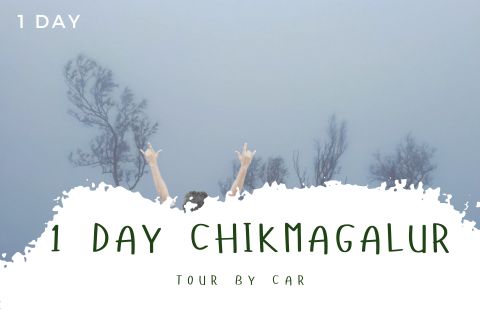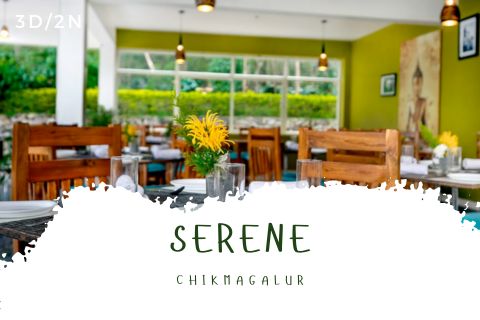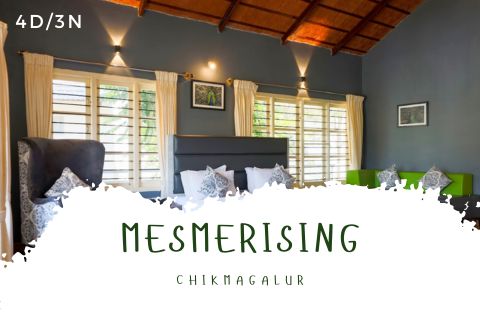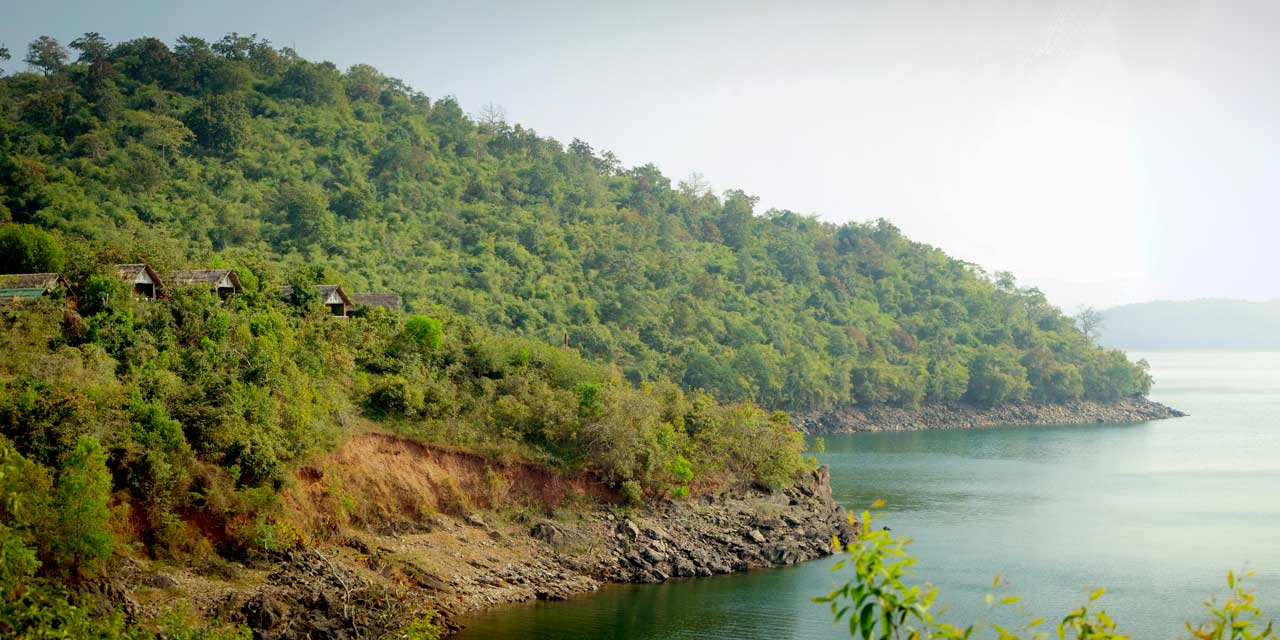Bhadra Wildlife Sanctuary Chikmagalur Entry Fee
- 500 per person for Adults (Bus Safari) for Indians
- 400 per person for Student (Bus Safari) for Indians
- 250 per person for Children (Bus Safari) for Indians
- 700 per person for Adults (Bus Safari) for Foreigners
- 350 per person for Children (Bus Safari) for Foreigners
- 600 per person for Adults (Jeep Safari) for Indians
- 400 per person for Student (Jeep Safari) for Indians
- 250 per person for Children (Jeep Safari) for Indians
- 900 per person for Adults (Jeep Safari) for Foreigners
- 450 per person for Children (Jeep Safari) for Foreigners
- Boat Safari: Similar rates as Jeep Safari
Bhadra Wildlife Sanctuary Chikmagalur Phone
08262 234904
Rating:  | 4/5 stars
| 4/5 stars
Based on total 62 reviews
Bhadra Wildlife Sanctuary Chikmagalur Address: Tarikere,Lakkavalli, Chikmagalur, Karnataka, 577101, India
Chikmagalur Tour Packages
Chikmagalur Tour PackagesBhadra Wildlife Sanctuary Chikmagalur Timings
| Day | Timing |
|---|---|
| Monday | 6:00 am – 9:00 am 3:00 pm – 6:00 pm |
| Tuesday | 6:00 am – 9:00 am 3:00 pm – 6:00 pm |
| Wednesday | 6:00 am – 9:00 am 3:00 pm – 6:00 pm |
| Thursday | 6:00 am – 9:00 am 3:00 pm – 6:00 pm |
| Friday | 6:00 am – 9:00 am 3:00 pm – 6:00 pm |
| Saturday | 6:00 am – 9:00 am 3:00 pm – 6:00 pm |
| Sunday | 6:00 am – 9:00 am 3:00 pm – 6:00 pm |
Surrounded by the mountain ranges of Western Ghats, especially the Baba Budangiri range, the Bhadra Wildlife Sanctuary forms quite a scenic landscape with lush green grasslands and dense shola forests. Spread across the districts of Shimoga and Chikmagalur, the sanctuary can be approached from any one of its two gates, situated at Lakkavalli and Muthodi.
The sanctuary is shaped like the alphabet E, only a bit distorted as the two large segments of the sanctuary are separated by the Baba Budan hills. The upper half of the segment is Lakkavalli range, and the lower segment is Muthodi range, also referred to as Jagara Valley by the locals.
The hills and slopes that surround the Bhadra Wildlife Sanctuary include Mullayanagiri, Gangegiri, Hebbegiri, and Baba Budangiri ranges.
The vegetation of the sanctuary is a mix of moist and dry deciduous, with the Bhadra river passing right through it. Home to a diverse flora and fauna, the Bhadra Wildlife Sanctuary is a haven for wildlife enthusiasts, birding enthusiasts, photographers, and trekking enthusiasts.
The climate here mostly remains pleasant however, temperatures do soar to 36 degrees Celsius during summers and drop to 10 degrees Celsius during winters. The average temperature remains somewhere between 18 and 30 degrees Celsius.
Location of Bhadra Wildlife Sanctuary
The Bhadra Wildlife Sanctuary and Tiger Reserve covers an area of over 490 square kilometers and is spread across two districts of Karnataka, Chikmagalur and Shimoga.
History of Bhadra Wildlife Sanctuary
What is now known as the Bhadra Wildlife Sanctuary was earlier called the Jagara Valley Wildlife Sanctuary and was established in 1951 by the then Mysore government. The sanctuary was then situated in an area of 77.45 square kilometer. However, a systematic survey of the flora and fauna of the sanctuary area and the area surrounding that of the sanctuary was commissioned as a result of which, the area was extended to its current extent which is 492 square kilometers. The sanctuary was also renamed to Bhadra Wildlife Sanctuary in 1974, after the river Bhadra.
The sanctuary was declared as the 25th tiger project of India in 1998. The Bhadra Wildlife Sanctuary is India’s first tiger reserve which completed a successful village relocation program by 2002. The original plan for relocating the 26 villages was introduced in 1974 however, this could only be implemented by 2002 when all of them were successfully relocated to M C Halli, around 50 kilometers from the sanctuary.
The sanctuary is often referred to as Bhadra Tiger Reserve too.
Image Gallery of Bhadra Wildlife Sanctuary/Muthodi Wildlife Sanctuary Chikmagalur
Biodiversity of Bhadra Wildlife Sanctuary
Covered with wet and moist deciduous forest and green forests, the Bhadra Wildlife Sanctuary is a biodiversity hotspot. Due to the various elevations of the surrounding mountains and landscapes, you can find a good variety of ecotypes or ecospecies which include mountain grasslands and especially the typical shola forest. The various elevation ranges of this wild yet beautifully undulating terrain are 615 m (2,018 ft) to 1,875 m (6,152 ft) and some patches higher than 1,400 m (4,600 ft) above MSL.
1. Flora: The Bhadra Wildlife Sanctuary houses the precious teak and rosewood, including many other commercial timbers like kindal, hone, nandi, mathi, tadalsu along with bamboo and many other medicinal plants. They form the under- canopy and there are wild ginger that grow on the forest floor, like a green carpet just in the closed area of the canopy. The area that is open has Eupatorium weed growing and the low- lying valley floor is covered with marshy glades or patches, locally called Hadlus.
The sanctuary is also home to more than 120 species of trees, Combretaceae being the most abundant family and Indigoberry (Randia dumetorum) being the most dominant species among all. A typical 2 hectares of the tropical dry deciduous forest land includes 46 species, 37 genera and 24 families.
The other common species that grow abundantly are Ceylon oak, Kydia calycina, simpoh (pentagyna), clumping bamboo, crepe myrtle (lanceolata), kadam, thaasal (tiliaefolia), teak, kindal, rosewood, slow match tree, white teak, fig tree, mangosteen, indigo, toddy palm, jalari, Indian laurel, axlewood, thorny bamboo, Indian kino tree, and jamba tree.
The most fascinating highlight of Bhadra Wildlife Sanctuary is the massive teak tree that stands tall at 32 meters with 5.1 meters of girth and is estimated to be a little over 400 years old. The tree is located in the Mutthoddi region and is called Jagara Giant and is often referred to as the living giant of Bhadra.
2. Fauna: The fauna indigenous to Bhadra Wildlife Sanctuary, Western Ghats is most certainly not restricted to tigers and leopards since it is a renowned tiger reserve; however, there are 40 tigers and around 20 leopards collectively in both Doddahadlu and Chandanahadlu. They can also be sighted at the rocky escarpment near Jenkalgiri caves.
The chances of spotting the tigers are very high during the peak summer months when the river water recedes, the vegetation is sparse, and they gather near watering holes.
The sanctuary was also established to protect and conserve large mammals such as elephants and gaurs, which are considered the pride of Bhadra. The other fauna population that resides under the thickets of shola trees include wild dog, common langur, pangolin, sambar, jungle cat, jackal, wild boar, spotted deer, sloth bear, flying squirrel, Malabar giant squirrel, common palm civet, bonnet macaque, small Indian civet, porcupine, black leopard, mouse deer, muntjac, chital, orangutan, bison, and slender loris.
There were a handsome number of Gaurs (around over 1000) in Bhadra Wildlife Sanctuary until most of them were swiped out during the outbreaks of Rinderpest disease between 1989 and 1999. This happened due to the spread of the foot and mouth disease that originated from the livestock that belonged to the local villagers that came into the sanctuary for grazing. This resulted in the Gaur population decreasing to the current number, which is a little over 200.
Among the small carnivores of Bhadra Wildlife Sanctuary are, rusty-spotted cat, stripe- necked mongoose, leopard cat, otters, and ruddy mongoose.
3. Reptiles: In addition to the exotic snakes, Bhadra Wildlife Sanctuary is also home to several reptiles that include marsh crocodiles, Draco or gliding lizards, common wolf snake, common vine snake, bamboo pit viper, king cobra, olive keelback, rat snake, Russell’s viper, common Indian monitor, and common cobra.
4. Avian Fauna: The Bhadra Wildlife Sanctuary is most definitely a birder’s paradise, since more than 300 species of birds have been recorded in the Sanctuary, some of them being endemic to the region. The avian fauna population of Bhadra Wildlife Sanctuary includes bee eaters, Malabar parakeets, paradise flycatchers, grey junglefowls, Malabar trogon, emerald dove, red spurfowl, Malabar whistling thrush, southern green imperial pigeon, ruby throated bulbul, great black woodpecker, four species of hornbill, painted bush quail, Osprey, shama, racquet tailed drongo, Indian scimitar babblers, darters, egrets, and hill myna.
River terns are spotted between March to May, especially around the backwaters of Bhadra river where they settle, nest, feed and procreate.
5. Butterflies: Bhadra Wildlife Sanctuary is also famous for being home to some 56 exotic butterfly species which include blue pansy, southern birdwing, yamfly, bamboo tree brown, baronet, great orange tip, crimson rose butterfly, and tailed jay.
Attractions at Bhadra Wildlife Sanctuary
1. Wildlife Safari: You may enjoy the wildlife safari using jeep safari, boat safari or bus/canter safari. However, it is recommended to opt for jeep safaris for the experience they offer being out and open in the wild with maximum exposure hence, they offer better sightings of the wildlife.
Nagarbhavi lake, situated at around 8 kilometers from the Range office is a great spot for elephant sightings. The waterholes at Talbidrekere and Melgiri and Kesarhalla are 3 other places that offer excellent wildlife sightings.
The boat safari is great for bird watching by the river side, especially the river terns, egrets, etc. The boats are arranged along the periphery of the Bhadra reservoir.
2. Trekking or Nature Trail Exploration: The 3.5-kilometer trail at Muthodi for trekking enthusiasts and for people who are up for forest exploration on foot.
3. Island Camping: You might need to take permission for camping but pitching tents by the Bhadra river among the wilderness is an experience in itself.
4. Bird Watching: Get ready with your binoculars and cameras for the superb experience of birding within the sanctuary that is home to some of the exotic as well as endemic birds.
5. Rock Climbing: Adventure enthusiasts will love going for rock climbing on the Mullayanagiri peak, which also happens to be the highest peak of Karnataka.
6. Boating: The boating facility is arranged for guests on the Bhadra river by a select few resorts/lodges. If your resort is not among them, you can always opt for the boat safari.
Best Time to visit Bhadra Wildlife Sanctuary
The best time to visit Bhadra Wildlife Sanctuary is between October and May. The summer months, specifically March through May, is the best time to spot the majority of wildlife since the animals come to drink water by the Bhadra river.
Entry Fee and Timings of Bhadra Wildlife Sanctuary
Safari Timings are 6:00 am to 9:00 am in the morning and 3:00 pm to 6:00 pm in the evening. The safaris are conducted all days of the week. Bus Safari: Adults - Rs. 500, Students - Rs. 400, Children - Rs. 250, Foreigners Adults - Rs. 700, Foreigners Children - Rs. 350
Jeep Safari: Adults - Rs. 600, Students - Rs. 400, Children - Rs. 250, Foreigners Adults - Rs. 900, Foreigners Children - Rs. 450.
Boat Safari: Similar rates as Jeep Safari
How to reach Bhadra Wildlife Sanctuary
By Air: The nearest airport is Mangalore Domestic Airport which is 185 kilometers from Bhadra wildlife Sanctuary. You may either hire a taxi or cab to reach the sanctuary or, alternatively, you can also travel by local train to reach the sanctuary.
The second nearest airport is Bangalore International Airport, which is 285 kilometers from Bhadra Wildlife Sanctuary. You may hire a cab and reach the sanctuary. It takes around 5 hours to reach Bhadra Wildlife Sanctuary from Bangalore.
By Train: The nearest railway station is Kadur, about 51 kilometers from Bhadra Wildlife Sanctuary. You may hire a taxi to reach the sanctuary.
By Road: The distance between Chikmagalur to Bhadra Wildlife Sanctuary is 79 kilometers. There are buses and taxis that ply from all popular places in Chikmagalur to the sanctuary throughout the day. You can also book a private cab from top car rental companies in Chikmagalur to reach the sanctuary. To reach Chikmagalur by road, you may either travel by KSRTC buses or hire cabs from all major cities because of its excellent connectivity.
Rules to follow when visiting Bhadra Wildlife Sanctuary
- It is important for tourists to carry valid identification proof (only government approved).
- For foreign nationals, it is mandatory to carry valid passports.
- It is recommended to carry mosquito repellants, drinking water and first-aid kits, wear full sleeves and full pants with colors that would go with the surrounding color so that you can camouflage. Also, wear good boots and avoid wearing sandals or slippers.
- It is not recommended to wear perfumes and essential oils.
- Please do not use plastic/non-biodegradable products and littering, smoking, drinking, and lighting fires are strictly prohibited.
- Do not use flashlights of the camera while clicking photographs.
- It is mandatory to wear face masks and shields post pandemic now.
- There are boat rides available for Lakkavalli gate and Muthodi gate bookings are to be made offline.
- Carry a pair of binoculars which would help spot birds and animals that are far away or hidden away from the safari trails. Wear caps and sunglasses as it gets hotter during the day.
Planning to visit Chikmagalur during your next vacation? Book a Chikmagalur Tour Packages with us to enjoy the best sightseeing places of Chikmagalur. The team of experts at Chikmagalur Tourism, a division of Holidays DNA, will ensure that you experience the best of everything while visiting the hill station. If you are looking for the best travel deals, then you can check out the latest travel offers from our website. For any queries, feel free to contact us through the Contact Us form. We look forward to serving you!





